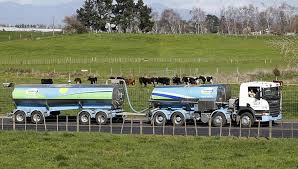
There are some interesting Business lessons from the Dairy industry we can all learn – regardless of our business type or industry. Most importantly is that when a business fails, it tends to never happen overnight. Any number of things will have led to that failure. Understanding what leads to failure gives the opportunity to learn. This in turn provides a better chance of not making the same mistakes and this really gets me thinking.
There has been a lot of press this year about the drop in dairy prices and the impact on farmers. Questions have also been asked over what the banks will do, will the government help, and what is Fonterra doing to assist.
Reflecting on this and what I know about running a business, I can see a number of lessons all business owners can learn from this situation.
Before I get to these, it’s important to start by providing a basic overview of the ‘players’ in the dairy industry and their respective ‘parts’. This will help to compare for businesses in general.
The main players
In the dairy industry I can see four main players.
- The Customer(s) – these are the local and global buyers of the product. They pay Fonterra to purchase the milk products.
- Fonterra – buys the milk from farmers, refines the product, packages it, markets it, and sells it. (Manufacturer and Distributor)
- The farmers – the producers of the milk
- The suppliers – sharemilkers, contractors, wholesalers/retailers who supply the goods or services to the farmers
In this type of relationship, the customers pay the determined market price to Fonterra. Fonterra keeps their cut (a set cost) of that income and then passes the balance to the producers. This works fine when the customer is paying more than enough to cover what Fonterra gets and what it costs the farmer to produce the milk. But there’s a problem when prices drop below the point where what the farmer gets is less than what it costs them to produce the milk.
Simplified, the dairy farmers are not getting enough because of one or more of the following:
- The customer isn’t paying enough
- Fonterra is keeping too much
- Farmers are spending more than they need to produce the milk
 According to the press, some have argued there is a fourth reason farmers are not getting enough – that is the Government is not doing enough to help. We reject that view because if the business (any business) is a good business then it will be sustainable and no Government assistance is needed. Businesses fail because they are either no longer relevant to customers, the business is unable to sell what it produces, or the costs of the business are greater than what it sells. These are all poor management issues and nothing Governments should be subsidising.
According to the press, some have argued there is a fourth reason farmers are not getting enough – that is the Government is not doing enough to help. We reject that view because if the business (any business) is a good business then it will be sustainable and no Government assistance is needed. Businesses fail because they are either no longer relevant to customers, the business is unable to sell what it produces, or the costs of the business are greater than what it sells. These are all poor management issues and nothing Governments should be subsidising.
What’s interesting in this case is that everyone is pointing the finger at everyone else or they’re defending their own position (and implying it’s everyone else’s fault).
Other than the customer, each player in this industry carries some responsibility towards the dairy industry crash. But as a business owner, we cannot always control the players outside our own business (i.e. Fonterra or the Government).However, we are directly, as well as indirectly, responsible for whatever happens to our business. And this can happen as a result of either taking some action, just as much as it can happen due to not taking any action at all.
So reflecting on the players and what has happened in the dairy industry, what can all business owners learn?
- 1You should know your market and your customers
- You should understand the roles of any middleman between you and your end customers
- You should understand your numbers; and
- You should always have a plan B and Z
Because the Dairy Industry is large and complex and there are so many players in it – I’m going to write this as part of a series of articles about what’s happening – so stay tuned for more Business Lessons From the Dairy Industry.
